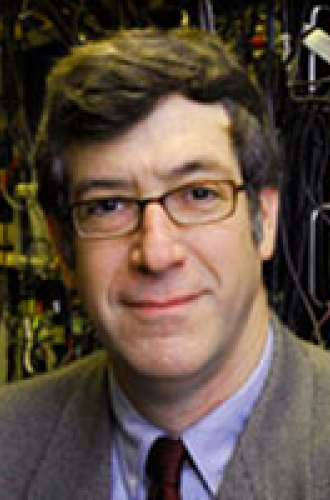-

-
Mark G Raizen
Professor, Professor of Pediatrics
Department of Physics, Department of Pediatrics
Sid W. Richardson Foundation Regents Chair in Physics #2 (Holder)Experimental atom opticsraizen@physics.utexas.edu
Phone: 512-471-0883
Office Location
PMA 14.202
Postal Address
2515 SPEEDWAY
AUSTIN, TX 78712-
Ph.D., University of Texas at Austin (1989)
Research InterestsExperimental atom optics
-Generation of Scalable Quantum Entanglement
-Comprehensive Control of Atomic and Molecular Motion
-Trapping of Atomic Hydrogen Isotopes
-Applications to New Materials and Processes
-Optical Trapping and Cooling of Glass Microspheres
When I was a child growing up in New York, I thought that I would become a medical doctor, following a long tradition in my family. At the age of ten, I visited my uncle’s lab at NIH in Bethesda, Maryland, and decided that I wanted to do the same thing. My uncle was a medical doctor by training, but chose a research career as a biochemist. That day, I realized that I wanted to be a scientist. In fact, I took the long and twisted road to being a physicist. In high school, physics was my worst subject, and I got a C in the class. I now realize it was because I was too curious, my teacher resented my constant questions, and wanted me to just memorize the book. I then turned to mathematics, where I could understand everything. My undergraduate degree is in that field. I always felt myself drawn to physics, and decided to pursue a graduate degree. My research began in theoretical physics, but then I became an experimentalist. I finally found my true calling as a research physicist and professor where I can combine theory with experiment. I have been directing a research group at UT Austin for almost 20 years.In the past few years, we have developed general methods to control the motion of atoms and molecules. This work will be used to test very basic questions in physics, and will also find real-life applications. I have always loved history, and am inspired by challenges of great scientists from the past. Our method for cooling atoms realizes a famous thought experiment known as Maxwell’s Demon, proposed by James Clerk Maxwell in 1871. Although Maxwell proposed this idea, he then noted that it was “impossible to us.” In another recent experiment, we measured for the first time the instantaneous velocity of a Brownian particle (a bead of glass). Our data was used to test the equipartition theorem for a Brownian particle, one of the basic tenets of statistical mechanics. This work follows a prediction by Albert Einstein from 1907, although he said the experiment is impossible!
I wish that I could meet my high school teacher now; I am sure he would be surprised.
-
Selected Publications
Note: publications marked by * are refereed.*122. "Cold atom experiment in quantum chaos," Mark Raizen and Daniel Steck, http://www.scholarpedia.org/article/Cold_atom_experiments_in_quantum_chaos
*123. "The atomic coilgun and single-photon cooling," A. Libson, S. T. Bannerman, R. J. Clark, T. R. Mazur, and M. G. Raizen, Hyperfine Interactions DOI:10.1007/s10751-012-0586-7 (2012).
*124. "Magnetically activated and guided isotope separation," M. G. Raizen, B. G. Klappauf, New J. Phys. 14, 023059 (2012).
*125. "Reply to comment on 'Using cold atoms to measure neutrino mass'," M. Jerkins, J. R. Klein, J. H. Majors, F. Robicheaux, M. G. Raizen, New J. Phys. 13, 078002 (2011).
*126. "Atom laser-beam finder," K. Viering, D. Medellin, J. Mo, and M. G. Raizen, Optics Express 20, 25590 (2012).
*127. "Towards cold chemistry with magnetically decelerated supersonic beams," E. Narevicius and M. G. Raizen, Chem. Rev. 112, 4879 (2012).
*128. "Brownian motion at short time scales," T. LI and M. G. Raizen, Ann. Phys. (Berlin) DOI: 10.1002/andp.201200232 (2013).
-
- Lewiner Distinguished Lecturer, Technion, Israel, 2009
- Willis E. Lamb Award for Laser Science and Quantum Optics 2008
- Max Planck Award, The Max Planck Society and The Alexander von Humboldt Foundation 2002
- Outstanding Doctoral Thesis Supervisor Award, John and Fannie Hertz Foundation 2003
- 29th Hanan Rosenthal Memorial Lecture, Yale Univ., Nov. 2002. 4
- Weston Visiting Professor, Weizmann Institute of Science, Summer 2001
- Sid W. Richardson Foundation Regents Chair in Physics, Sept. 1, 2000-
- 1999 I. I. Rabi Prize in Atomic, Molecular, and Optical Physics, American Physical Society.
- Fellow, American Physical Society 1997-
- Fellow, Optical Society of America 2001-
- Sid W. Richardson Foundation Regents Chair Fellow 1998-2000
- National Science Foundation Young Investigator 1993-1998
- Office of Naval Research Young Investigator 1992-1995
- Alfred P. Sloan Foundation Research Fellow 1992-1994
- Sid W. Richardson Foundation Regents Chair Fellow 1991-1993
- National Research Council Postdoctoral Fellowship 1989-1991
- IBM Graduate Fellowship 1987-1988
- University of Texas Graduate Fellowship, 1986-1987
-














